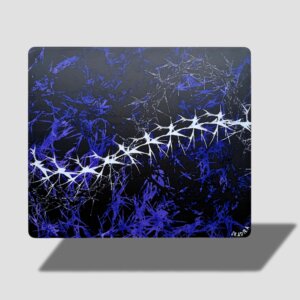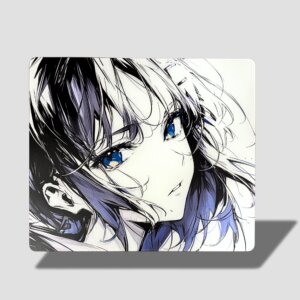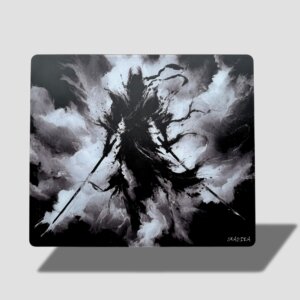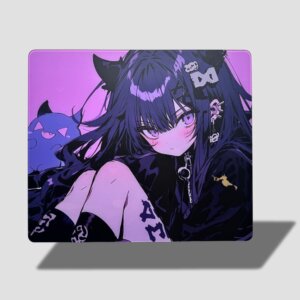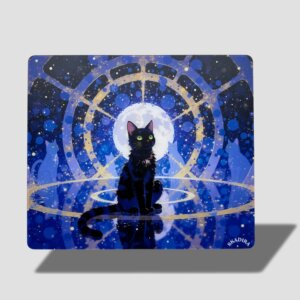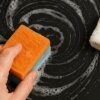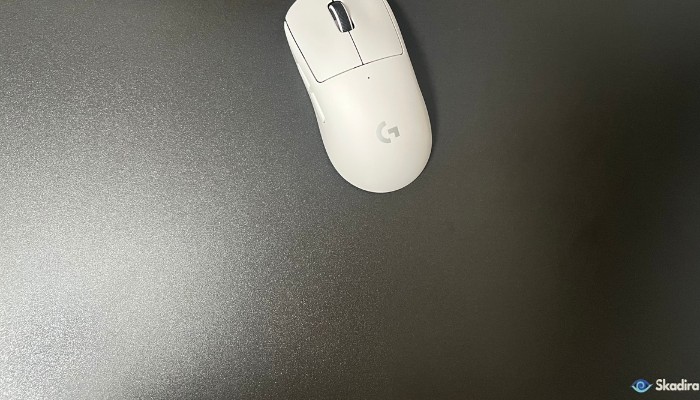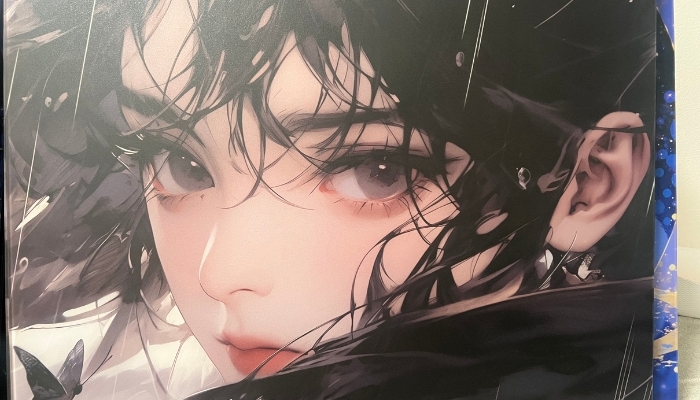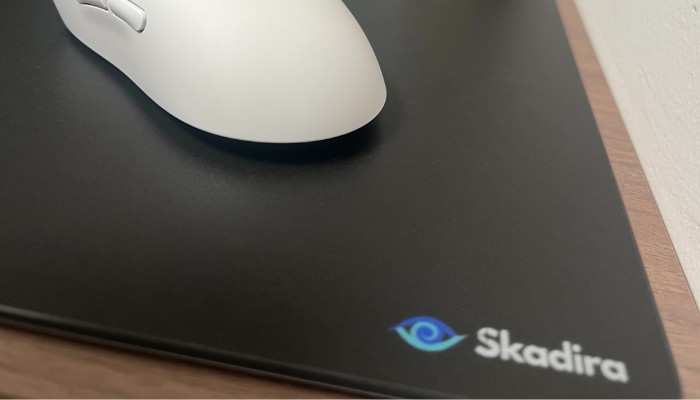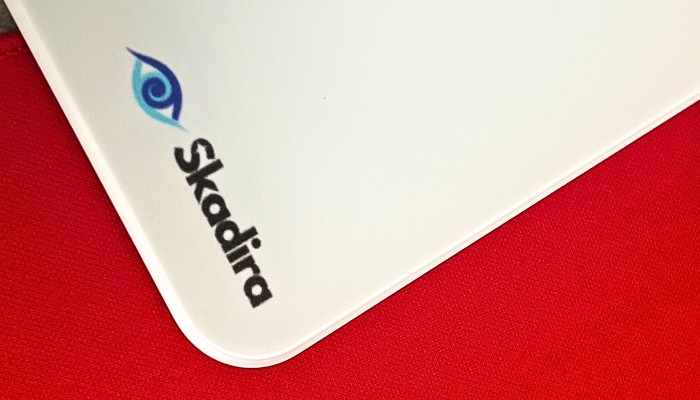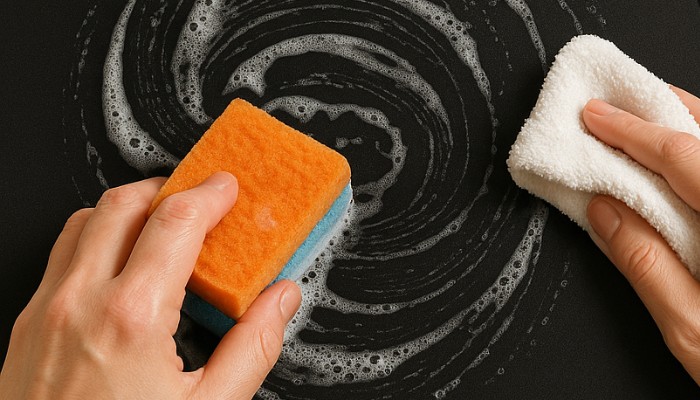No products in the cart.
Hello gamers! Nicholas here, back after a long break to talk about something that’s been revolutionizing my gaming setup lately – the Skadira glass mousepad.
As someone who’s spent countless hours gaming with traditional cloth mousepads, I’ll admit I was both skeptical and curious about trying a glass surface. Having never used a glass mousepad before, this was completely new territory for me. Would it really make a difference in my gameplay? Could it possibly be worth the premium price tag these specialized surfaces often carry?
In this comprehensive guide, I’ll walk you through my experience transitioning from standard cloth pads to this tempered glass surface, detailing the noticeable differences in performance, durability, and feel. I’ll be sharing my honest thoughts after testing the Skadira glass mousepad across various game genres – from fast-paced FPS titles where precision matters, to MOBAs requiring consistent tracking.
What makes glass mousepads different? How do they affect your aim, tracking, and overall comfort? Are they worth the investment for serious gamers? These are all questions I’ll be addressing based on my hands-on experience.
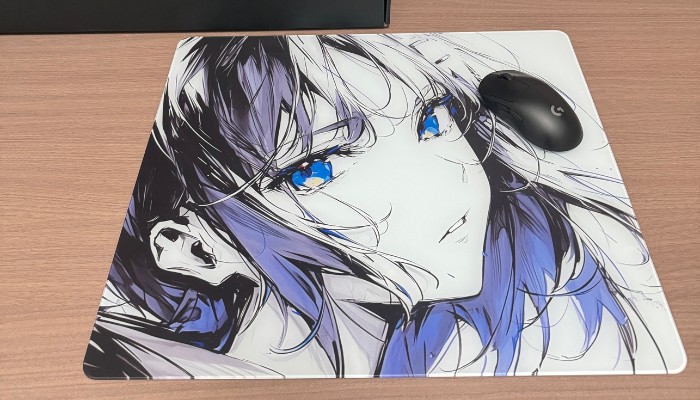
First Game Test: Marvel Rivals
After setting up the Skadira glass mousepad, I couldn’t wait to put it to the test in a fast-paced hero shooter. My first choice was Marvel Rivals, the team-based competitive shooter that demands precision aiming, quick reflexes, and smooth tracking abilities.

Initial Experience with Marvel Rivals
From the moment I loaded into my first match, the difference was immediately noticeable. The glass surface of the Skadira mousepad provided an incredibly smooth gliding experience that felt like my mouse was floating across the screen. As someone who mains Iron Man in Marvel Rivals, this newfound precision was a game-changer for tracking enemy movements while hovering mid-air and landing those critical repulsor shots.
Hero-Specific Performance
I tested the mousepad across several heroes to see how it would impact different playstyles:
Iron Man: The smooth surface allowed for much more precise aerial maneuvers. When using his Ultimate ability, the consistent glide of the mousepad made it significantly easier to maintain aim while tracking multiple targets from above. Those micro-adjustments when firing repulsor beams felt much more responsive compared to my cloth mousepad.
Black Panther: Playing as T’Challa requires quick, sudden movements and rapid direction changes. The glass mousepad excelled here – I could perform those lightning-fast 180-degree turns to catch flanking opponents without any resistance or inconsistency that I used to experience with cloth surfaces. Chaining his vibranium slash attacks felt much more fluid and precise.
Magik: Her teleportation abilities demand quick target acquisition after repositioning. The glass mousepad’s consistent tracking helped me snap to new targets immediately after teleporting, which proved crucial in several team fights. I noticed I was hitting significantly more soul slash attacks after portal jumps.
The Competitive Edge
During an intense Control match on the Asgard map, I found myself in a nail-biting 1v3 situation as Storm. The low-friction surface allowed me to perform rapid yet precise camera movements to track all three opponents simultaneously. I was able to pull off a team-saving play by accurately landing her tornado ultimate on all three enemies while continuously adjusting my position – something I’m convinced wouldn’t have been possible with my previous mousepad.
The Details That Matter
What really stood out during Marvel Rivals gameplay was the consistency regardless of mouse movement speed. Whether I was making minute aiming adjustments as Rocket Raccoon from a distance or performing sweeping camera movements as Hulk during close-quarters combat, the glass surface maintained the same smooth resistance throughout.
The mousepad’s edge-to-edge performance was flawless as well. With cloth mousepads, I’d occasionally notice slight inconsistencies when moving from the center to the edges, but the Skadira glass provided the same smooth experience across its entire surface – crucial when you’re trying to track a teleporting Nightcrawler who’s dancing around your screen.
After several hours of Marvel Rivals matches, my aim consistency had noticeably improved. My accuracy stats showed a modest but meaningful improvement, particularly in critical hit percentage. The predictable surface meant that muscle memory could develop more reliably without having to compensate for inconsistent friction.
While the glass mousepad won’t instantly transform you into a pro player, it removes one more variable that could hold back your performance in a competitive shooter like Marvel Rivals where split-second precision can mean the difference between victory and defeat.
DOTA 2: Familiar Territory
A Seamless Transition
Unlike with Marvel Rivals, where the difference was immediately apparent, playing DOTA 2 with the glass mousepad felt remarkably familiar. The precision movements required for last-hitting creeps, positioning in team fights, and quick map navigation all translated well from my previous cloth mousepad experience.
I tested several heroes across different roles – from micro-intensive heroes like Meepo and Invoker to more positioning-dependent supports like Crystal Maiden. Regardless of the hero choice, the glass surface provided reliable performance without requiring significant adjustment to my playstyle.

Why So Similar?
This similarity likely stems from DOTA 2’s less demanding requirements for rapid, precise aiming compared to shooters. While you certainly need accuracy for targeting abilities, the game focuses more on strategic positioning and decision-making than split-second aim adjustments.
The one subtle improvement I did notice was slightly more consistent cursor movement when rapidly clicking between inventory items and abilities during hectic team fights. The reduced friction made these quick transitions marginally smoother, but not enough to dramatically impact gameplay.
For MOBA players wondering if a glass mousepad will revolutionize their DOTA 2 experience – the answer is probably not. While the mousepad performs admirably, the benefits are less pronounced than in aim-intensive genres. That said, the consistent surface does ensure your mouse movements will never be hampered by an inconsistent or worn cloth surface.
Tactical Shooters: Valorant and CS2
After exploring different game genres, it was time to put the Skadira glass mousepad to the ultimate test: tactical shooters. According to countless Reddit threads and conventional wisdom, glass mousepads are supposedly ill-suited for tactical FPS games like Valorant and CS2, where precise control and consistent stopping power are prioritized over speed.

Challenging the Reddit Consensus
I approached these tests with skepticism, having read numerous comments claiming glass surfaces are “too slippery” or “lack the control needed” for tactical shooters. The common belief is that cloth pads reign supreme in this genre due to their stopping power and predictability when making micro-adjustments.
My experience with the Skadira, however, tells a different story.
The Controlled Glide of Skadira
What sets the Skadira apart from other glass mousepads I’ve researched is its textured surface that provides a surprising level of control. Unlike completely smooth glass options, this mousepad offers what I’d describe as a “controlled glide” – fast movement with just enough resistance to stop precisely where you intend.
After an initial adjustment period of about 3-4 matches, I found myself landing headshots with remarkable consistency in both games. The surface allowed for rapid flicks while still providing enough tactile feedback to stop precisely on target.
Valorant Performance
In Valorant, playing agents like Chamber and Jett who benefit from precise aim, I noticed my headshot percentage climbing steadily as I adapted to the mousepad. The ability to make lightning-fast yet controlled 180-degree turns became particularly valuable when defending sites from multiple entry points.
What impressed me most was the consistency across different sensitivity settings. Whether using a higher sensitivity for entry fragging or a lower one for holding angles with the Operator, the glass surface maintained the same predictable feel.
CS2 Revelation
CS2 was where the mousepad truly surprised me. Spray control – often cited as the weakest aspect of glass mousepads – became remarkably manageable once I adjusted to the different stopping power. The consistent surface meant that once I adapted my muscle memory, my spray patterns became more reliable than on my worn cloth pad.
AWP flicks felt clean and precise, and I found myself winning more clutch situations that demanded quick target transitions. The mousepad’s edge-to-edge consistency meant that no matter where on the pad I was aiming from, the feeling remained identical.
Adaptation is Key
The critical factor here was adaptation time. The first few hours with tactical shooters on the Skadira were admittedly challenging – I overshot targets and struggled with micro-adjustments. However, once my muscle memory adjusted to the different stopping power, the benefits of the consistent surface began to shine through.
This experience has taught me an important lesson about gaming peripherals: don’t always trust the conventional wisdom without testing for yourself. While glass mousepads might not be for everyone in tactical shooters, the Skadira’s controlled surface has proven that they can absolutely compete with – and in some cases outperform – traditional cloth options once you’ve adapted to their unique feel.
Conclusion: Is a Glass Mousepad Right for Your Gaming Style?
After extensive testing across multiple game genres – from the hero-based action of Marvel Rivals to the strategic depth of DOTA 2 and the precision demands of tactical shooters like Valorant and CS2 – I’ve developed a comprehensive understanding of what the Skadira glass mousepad brings to different gaming experiences.
Featured products
Blue Brambles
$99 USDGlacial
Original price was: $129$99Current price is: $99 USDInkblade Phantom
$99 USDLilith Pixie
$99 USDMagic Cat
Original price was: $129$99Current price is: $99 USD
Who Should Consider a Glass Mousepad?
Based on my testing, here’s who would benefit most from investing in a quality glass mousepad like the Skadira:
FPS enthusiasts will likely see the most dramatic improvement. The consistent surface and controlled glide translate to more reliable aim and potentially higher headshot percentages once you’ve adapted to the different feel. Despite popular misconceptions, tactical shooters can absolutely benefit from a glass mousepad with the right surface texture.
Hero shooter players will appreciate the precision for tracking moving targets and the consistency during extended gaming sessions. The ability to make both micro-adjustments and sweeping movements with equal accuracy provides a tangible advantage in fast-paced team fights.
Multi-genre gamers who switch between different game styles will enjoy the versatility. While the benefits were less pronounced in MOBAs like DOTA 2, the mousepad never detracted from performance and offered subtle improvements in intense team fights.
The Learning Curve
It’s important to acknowledge that transitioning to a glass mousepad involves an adjustment period. Your muscle memory needs time to adapt to the different friction and stopping power. For most games in my testing, this took anywhere from a few hours to a couple of days of consistent play.
The adjustment was most challenging for tactical shooters but ultimately yielded some of the most satisfying improvements. Be patient during this transition, and don’t immediately dismiss the mousepad if it feels strange at first.
Long-Term Considerations
Unlike cloth mousepads that wear down over time and develop inconsistent glide patterns, the Skadira glass surface has maintained the exact same feel throughout my testing period. This consistency over time is perhaps one of the strongest arguments for investing in a glass mousepad, especially for competitive gamers who value reliability.
Maintenance is also remarkably simple – a quick wipe with a microfiber cloth restores the surface to pristine condition, with no concerns about fraying edges or absorbed liquids that plague cloth alternatives.
Final Verdict
The Skadira glass mousepad defied my expectations and challenged conventional wisdom about which gaming genres benefit from glass surfaces. While it comes with a higher price tag than standard options, the performance benefits and durability make it a worthwhile investment for serious gamers.
If precision, consistency, and longevity matter to your gaming experience, a quality glass mousepad deserves serious consideration. Just remember that like any premium peripheral, it requires an adjustment period to truly unlock its potential.
As for me, I won’t be returning to cloth mousepads anytime soon. The glass revolution has converted another gamer, and I’m looking forward to testing more options in this category to see how they compare to the impressive benchmark set by the Skadira.
